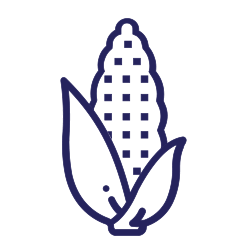Section Title
Effect of Delayed Seeding on Spring Wheat and Barley
- Wheat
It’s no secret that late planting of spring cereals usually means lower yield. Optimal planting dates range from the end of April to the end of May, depending on location in the province. However, industry experts recommend that farmers make every effort to get their cereals in as early as possible. Yield chart data from both Manitoba and North Dakota suggest that farmers could see a 1% yield reduction for every day that seeding is delayed beyond mid-May. Note that MASC’s seeding deadline for spring wheat and barley in 2024 is June 20th.

Figure 1: Average relative yield reported to MASC during each sowing week for the selected crops grown in Manitoba for the period of 2010 – 2019. The vertical axis represents the percentage of average yield, and the horizontal axis represents the week each crop is sown.
Early planting is one way that farmers can ‘manage’ the weather environment in which their wheat crop grows. Higher than average temperatures during the vegetative growth phase force the plant to develop faster, resulting in fewer tillers, smaller heads and fewer kernels per head. Late planting can also mean that temperatures during the grain fill period are relatively warmer. This is important as warmer temperatures during this phase reduce the amount of photosynthate available to the developing kernels. If you suspect that seeding operations on your farm may be delayed, consider switching to an earlier maturing variety to mitigate the risk of grain fill occurring when temperatures are less than favorable. However, this only makes sense if you have ready access to seed of an earlier maturing variety.
While planting date is an important determinant of yield, there are many other environmental, biological and management factors to consider. Establishing a uniform stand is critical, and should be balanced with getting the crop in. Note that pre-plant tillage when soils are too wet can lead to poor seedbed conditions. Another consideration to keep in mind is that planting when conditions are too wet can result in side-wall compaction, which impacts establishment as well as growth and development later in the season.
Late-planted fields may also face increased disease pressure. This includes Fusarium Head Blight, as well as leaf rust. Farmers may need to plan for a fungicide application if leaf rust is observed, or conditions are favorable for FHB development. Disease forecasts and weather conditions can be monitored using the following resources:
- Manitoba Agriculture FHB Risk Maps
- Manitoba Agriculture Ag Weather
- Prairie Crop Disease Monitoring Network
- NDSU’s Small Grains Disease Forecasting Model
Information in this article was sourced from Manitoba Agriculture: Mitigating the Risks of Delayed Seeding and NDSU Crop & Pest Report-May 9, 2019.









